NEW QUESTS IN STELLAR ASTROPHYSICS IV
ASTROCHEMISTRY, ASTROBIOLOGY
AND THE ORIGIN OF LIFE
Puerto Vallarta, Mexico: March 31 - April 5, 2019
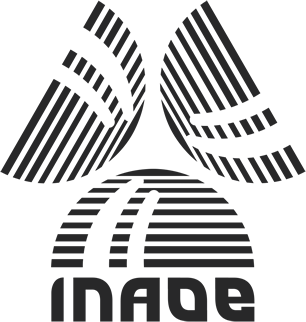
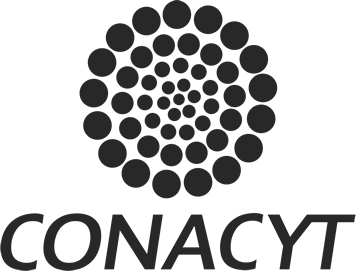
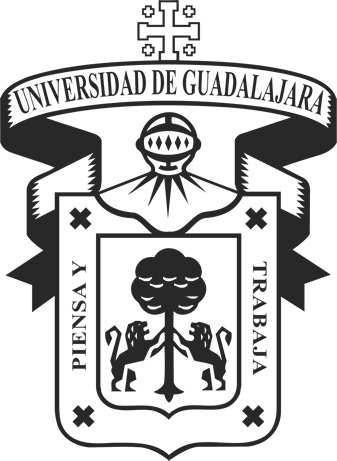
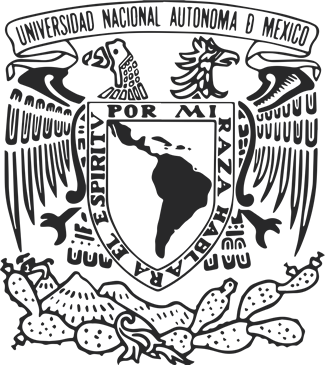
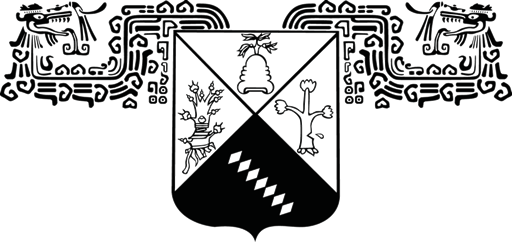
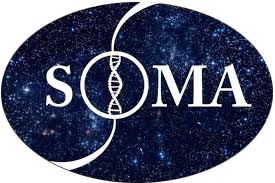
Conference Program
Venue: Rooms Madrid and Sevilla, Hotel Melia, Puerto Vallarta
Sunday 31st of March 2019
| 17:00 | Registration opens in Room Valencia (ground floor, next to the Lobby) |
| 18:30 | Welcome cocktail on the beach |
Monday 1st of April 2019
| 9:00-9:30 | Welcome addresses |
| Session 1 | Chemical networks and complex (prebiotic) molecules in star formation |
| 9:30-10:10 | Gas-phase chemistry and molecular complexity in space: how far do they go? Nadia Balucani (invited) |
| 10:10-10:30 | Empirical study of formamide (NH2CHO) formation around young O-type stars Veronica Allen |
| 10:30-10:50 | A timeline for massive star-forming regions via astrochemical studies Stefano Bovino |
| 10:50-11:10 | Gas-phase formation routes for interstellar Complex Organic Molecules: reactivity based on quantum chemistry computations Fanny Vazart |
| 11:10-11:40 | Coffee break |
| 11:40-12:20 | Abiotic synthesis of complex organics in the Universe Sun Kwok (invited) |
| 12:20-12:40 | Searching for Phosphorus-bearing molecules in Solar-type Star Forming Regions Bertrand Le Floch |
| 12:40-13:00 | Seeds of Dust and Planets: Forming the First Benzene Ring from the Ground Up Brett McGuire |
| 13:00-13:20 | Organic Molecules: How to See the Forest from the Trees Eduardo Janot Pacheco |
| 13:20-15:30 | Lunch |
| 15:30-16:10 | Complex Molecules in Hot Molecular Cores: Are we getting closer to the detection of Amino Acids? Luis Zapata (invited) |
| 16:10-16:30 | Abundant Z-cyanomethanimine in the interstellar medium: paving the way to the synthesis of adenine Víctor M. Rivilla Rodríguez |
| 16:30-16:50 | First-principles analyses on formation and dissociation of small molecules in interstellar environment Yasuteru Shigeta |
| 16:50-17:20 | Coffee break |
| 17:20-18:20 | Poster presentations |
Tuesday 2nd of April 2019
| Session 2 | Astrochemistry of young and mature star+disk systems |
| 9:30-10:10 | Organic molecules in protoplanetary disks Cécile Favre (invited) |
| 10:10-10:30 | Evolution of ices and deuteration during the formation stage of protoplanetary disks Kenji Furuya |
| 10:30-10:50 | Tracing chemical inheritance in protoplanetary disks Ryan Loomis |
| 10:50-11:20 | Coffee break |
| 11:20-12:00 | Observations of gaseous debris disks Aya Higuchi (invited) |
| 12:00-12:40 | Astrochemistry of protoplanetary disks Viviana Guzman Veloso (invited) |
| 12:40-13:00 | Poster presentations |
| 13:00-15:30 | Lunch |
| Session 3 | Scenarios on the emergence of life on Earth and beyond |
| 15:30-16:10 | An Universe teeming with life? Antonio Lazcano (invited) |
| 16:10-16:30 | The discovery of exocomets and their possible relationship to organic life on Exoplanets Barry Welsh |
| 16:30-16:50 | Resolving The Young Sun's Paradox on Early Earth - Clues from Mars Vladimir Airapetian |
| 16:50-17:10 | The road to life: inanimate complex systems, the case of Planetary Nebulae Antonio Mampaso |
| 17:10-17:40 | Coffee break |
| Special Session on General aspects of star formation and the interstellar medium | |
| 17:40-18:00 | The "black box" genome of Deinococcus radiodurans becoming grayish Claudia Lage |
| 18:00-18:20 | Halophilic bacteria strategies help to understand habitability aspects of the Solar System Sandra Ramírez Jiménez |
| 18:20-18:40 | Ejection velocity of the Orion fingers Pedro Rubén Rivera Ortiz |
| 18:40-19:00 | On the size of the CO-depletion radius in the IRDC G351.77-0.51 Giovanni Sabatini |
| 19:00-19:20 | The chemical age of high-mass clumps Andrea Giannetti |
Wednesday 3rd of April 2019
| Session 4 | Exoplanet characterization and the search for biomarkers |
| 9:30-10:10 | In search of Earth analogs around solar twins Jorge Melendez (invited) |
| 10:10-10:30 | Planets of other suns Niedzielski Andrzej |
| 10:30-10:50 | “Solaris”. Global network of robotic telescopes for stellar astronomy and exoplanets Maciej Konacki |
| 10:50-11:10 | Inferring the Size Scales of Planetary Systems Using Resolved Debris Discs Jonathan Marshall |
| 11:10-11:40 | Coffee break |
| 11:40-12:00 | The CARMENES Survey for M Dwarf Planets Andreas Quirrenbach |
| 12:00-12:20 | Earth-like planets around Low Mass Stars Guillem Anglada |
| 12:20-12:40 | ALMA observations and radiative transfer modelling of low- and high-mass star-forming systems Roberto Galván-Madrid |
| 12:40-13:30 | Poster presentations of sessions 3 and 4 |
| 13:30 | Lunch and Free afternoon. Information on tours and possible activities will be announced during the conference |
Thursday 4th of April 2019
| Session 5 | Habitability of exo-worlds and Exoplanetary theoretical models |
| 9:30-10:10 | After the Habitable Zone Rory Barnes (invited) |
| 10:10-10:30 | Coronal Mass Ejections in Low-Mass Stars and Their Influence on Habitability Julián David Alvarado Gómez |
| 10:30-10:50 | Poly-extremophiles: exploring the limits of habitability Pablo Mauas |
| 10:50-11:10 | Implications of non-standard physics on the future evolution of the Sun and exo-planets orbiting red giant stars Santiago Arceo Díaz |
| 11:10-11:40 | Coffee break |
| 11:40-12:20 | Planetary habitability around M dwarfs: lessons from Proxima and Trappist-1 Antígona Segura (invited) |
| 12:20-12:40 | The afterlife: Exploring the possibility of hosting life in evolved planetary systems Eva Villaver |
| 12:40-13:00 | Computer simulation of the UV irradiation of different spectral types of stars on potentially habitable planets: Its impact in prebiotic chemistry M. Armas |
| 13:00-15:30 | Lunch |
| 15:30-16:10 | The role of the host star: Astrophysical constraints on planetary habitability Manuel Guedel (invited) |
| 16:10-16:30 | Impact rate and water delivery to the terrestrial planets from a dwindling asteroid belt Julio Ángel Fernández |
| 16:30-17:10 | Exploring the habitability of exoplanets with climate models Giovanni Vladilo (invited) |
| 17:10-17:40 | Coffee break |
| Session 6 | Historical, societal aspects and education in astrobiology |
| 17:40-18:20 | Societal Aspects of Astrobiology and the Impact of Discovering Life Beyond Earth Steven Dick (invited) |
| 18:20-18:50 | Poster presentations of sessions 5 and 6 |
| 20:00-23:00 | Conference Dinner The conference dinner will be within the premises of the hotel (terrace at the beachfront, next to the big palapa). It will be a private event with a cost of $550.00 mexican pesos (30USD=25Euro)/person for those who are staying at the Melia Hotel (and their accompanying guests), and $650.00 mexican pesos (34USD=30Euro)/person and extra persons who have reserved at other hotels. The private event includes a 3-course dinner menu, 3hour open bar (until 11pm), and live music (2 hour of the astronomer-sax player Pablo Ramirez+1 hour Mariachi). |
Friday 5th of April 2019
| Session 7 | Space exploration and observations from the ground of solar system objects of astrobiological interest |
| 9:30-10:10 | Status of the Large Millimeter Telescope “Alfonso Serrano” David Hughes (invited) |
| 10:10-10:50 | Observations of Comets with the Large Millimeter Telescope F. Peter Schloerb (invited) |
| 10:50-11:20 | Coffee break |
| 11:20-12:00 | Poster presentations |
| 12:00-12:40 | Status of World Space Observatory-UV Mikhail Sachkov (invited) |
| 12:40-13:20 | The Dragonfly Mission Proposal: Prebiotic Chemistry and a Search for
Biosignatures on Saturn's Moon Titan Jason W. Barnes (invited) |
| 13:20-13:30 | Concluding remarks |
POSTER SESSION 1
| [1] | The Dawn of Organic Chemistry (Cecilia Ceccarelli) | |
| [2] | 13C isotope chemistry in O and C-rich AGB star envelopes (Gwenaelle Dufour) | |
| [3] | Low temperature condensation of polyaromatic carbon grains from PAHs (Lisseth Gavilan) | |
| [4] | Complex Organic Molecules in the Low-Metallicity Large Magellanic Cloud (Marta Sewilo) | |
| [5] | Molecular study of two intermediate-mass hot cores in the region of OMC1s (Ma Teresa Orozco) | |
| [6] | Complex molecules at EGO's & ATLASGAL's High Mass Star Forming Regions (Omar Sergio Rojas García) | |
| [8] | Pilot program with the LMT to look for molecules in PNe (Lucero Uscanga) |
POSTER SESSION 2
| [9] | TUPURI: A large survey of debris disks with the LMT (Emanuele Bertone) | |
| [10] | Spectral line surveys of evolved stars and protostars with the Large Millimeter Telescope (Arturo Gómez-Ruiz) |
POSTER SESSION 3
| [11] | Computer simulation of the oligomerization process in solid chiral amino acids (Alejandro Heredia Barbero1, D. Luna-Laviada, P. Rodríguez-Zamora, H.I. Cruz-Rosas, G. Cocho, H.G. Vázquez-López, S. Ramos-Bernal and A. Negrón-Mendoza) | |
| [12] | The behavior of aldehydes of astrobiological importance under irradiation (Alicia Negrón-Mendoza) | |
| [13] | Is there life on Earth? (Bendjoya Philippe) | |
| [14] | Sorption of amino acids onto minerals: the first step to consider origin of life´s scenarios (Cruz-Hernández, A.E., Villafañe-Barajas, S.A.1, Colín-García, M.) | |
| [15] | Computer simulation of a primitive peptide in a mineral environment analogous to the Naica System (J.U. López-Pérez, C. Fuentes-Carreón, S. Ramos-Bernal, A. Negrón-Mendoza, A. Heredia) | |
| [16] | Microstructural and spectroscopical characterization of the Allende meteorite: Its relevance in prebiotic chemistry (Daniel Luna-Laviada) | |
| [17] | Could life emerge on the icy moons of the Solar System? (Manet Estefanía Peña Salinas) | |
| [18] | Prebiotic Fatty Acid Vesicles through Photochemical Dissipative Structuring (Oscar Rodríguez Reza) | |
| [19] | Pondering on the origin of life from abiogenesis (Luis Miguel Rodríguez Torres) | |
| [20] | Irradiation of cytosine adsorbed in a clay mineral (Sergio Ramos-Bernal) | |
| [21] | The nature reconstruction of the Last Universal Common Ancestor of all living beings (Gilberto Pérez Morales) | |
| [22] | Could tardigrades survive on icy worlds like Enceladus? (Patricia G. Núñez) |
POSTER SESSION 4
| [23] | Stellar and planetary characterization of two Kepler multi-planet systems from high-quality Gemini/GRACES spectra (Emiliano Jofre) | |
| [24] | A search for orbital decay in southern transiting planets (Romina Petrucci) | |
| [25] | Atmospheric characterization of Saturn-like planets through multi-band photometry (Miguel Briones Rivera) | |
| [26] | The Relation UV activity – Rotation (Carlos Alberto Montez Zavala) |
POSTER SESSION 5
| [27] | Dynamical evolution of two-planet systems and the WD atmospheric pollution (Raul Felipe Maldonado Sánchez) | |
| [28] | Stellar UV Excess in the Kepler Field (Manuel Olmedo Aguilar) | |
| [29] | GPS - From the rotation of the Sun to the understanding of its analogs (Eliana Amazo) |
POSTER SESSION 6
| [30] | Experiences on teaching Astrobiology in Baja California: from classical lectures to MOOCs (Roberto Vázquez) | |
| [31] | Astrobiology as a didactic strategy to develop compentences (Sandra Ramírez Jiménez) |
POSTER SESSION 7
| [32] | Exploring the Enceladus Molecular Environment with the LMT (Miguel Chávez Dagostino) | |
| [33] | Study of the Effect of Ionizing Radiation in the Decomposition and Detection of Organic Material in One Mars Analog Soil (José Alfredo Rojas Vivas, José Guadalupe De la Rosa Canales, Paola Molina Sevilla, Rafael Navarro González) | |
| [34] | Comparative analysis of impacts of similar ICMEs on near-Mars environment during solar minimum and solar maximum (Laura Neves Ribeiro do Amaral) |
POSTER GENERAL
| [35] | Recombination Lines and Molecular Gas around Young Massive Stars in W51A (Rudy Alberto Rivera Soto) | |
| [36] | Near-Earth Object detection using synthetic tracking technique and the astrographs equipped with sCMOS cameras. (Beata Rogowska) | |
| [37] | Spatial structure of the Galactic ISM obtained with the analysis of prominent DIBs (Rok Vogrinčič) | |
| [38] | TolTEC: Unveiling the Hidden Universe (Alfredo Montaña and Miguel Chavez Dagostino) |